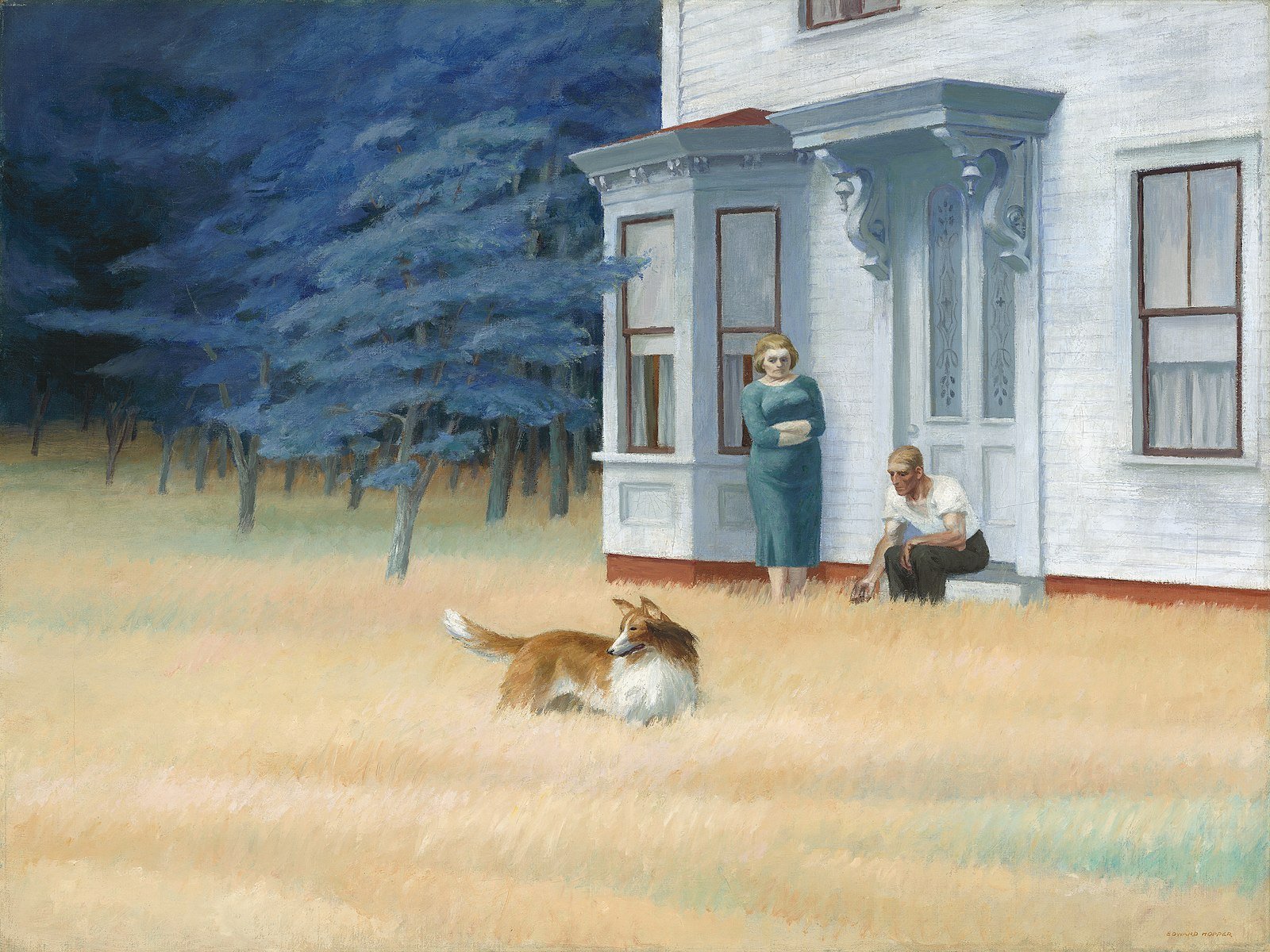Landmarks: Capturing Cape Cod
By Julia Amaro
This article was inspired by Ohanga Creative Scott Simmons’s prints.
You can browse more of Simmons’s artwork in the Ohanga Market.
Here’s a SPECIAL THANK YOU for being an avid reader and supporting ETCH!
I have never been to Cape Cod, but looking at Scott Simmons's paintings, I can begin to understand what it feels like to be there. What it would be like to walk along Commercial Street, or to watch the sunset over the White Village Cottages. Simmons paints these landmarks straight-on, making me feel like I am strolling around and casually stumbling across these spots on a quiet fall afternoon.
Simmons is not the first painter to capture the peaceful scenery of Cape Cod. Edward Hopper was known for his realistic approach when it came to illustrating urban American life, like in his famed New York painting Nighthawks, but Hopper also spent many of his summers in Cape Cod, creating pieces that mixed his signature art style with his perspective on the Cape. In his portrayal of Cape Cod, Hopper possesses a uniquely sober outlook on the illuminated landscape. He juxtaposes the bright and colorful environment with his pragmatic view on human life. In Cape Cod Evening, the presence of a bored, stern couple outside a common house is melancholic, acting as a poignant example of his perspective on the clashes between a dreary reality and a vivid external landscape. Cape Cod serves as the background of what is being pictured, instead of acting as the subject itself.
A similarity shared by Hopper’s and Simmons’s artwork is the inclusion of simplistic buildings in isolated planes as a way to capture light. Sunsets are portrayed through their reflection in these buildings and capture the pervading energy of Cape Cod. Both artists deal with the theme of studying sunlight on the Cape and the emptiness that autumn brings to the setting, but Simmons appears to hold a more positive or neutral stance.
Simmons's collection of Days Cottage paintings is made with clarity; there is a focus on the cottage with the ocean behind it, and the various quirky names of the cottages add a joyful element to the pieces. My personal favorites are the White Village Cottages paintings. In Sunday Afternoon we get a distanced perspective from the highway, which produces a sensation of being on the road, passing by the cottages during an idyllic afternoon. The piece Seating for Two brings a different view of the structures, depicting the fronts of the houses, and we can tell that night is settling in. It is the only painting where the sky is not a bright blue, accentuating the feeling of autumn. October Sunset offers a fresh look at the front of the cottages. In this painting, the sun has not yet set, and so we see shadows on the white painted walls and two red chairs. The scene contains no human subjects, but with the presence of chairs, it feels like there once were people there enjoying the sunset. All of these pieces come together to develop a vivid image of these cottages in my mind: a tranquil location by the sea where I would relish every sunset.
Commercial Street illustrates the heart of Provincetown, a place regularly frequented by tourists, though Simmons's painting depicts an empty street. The houses have light tones of white and blue, and the only recognizable business is the Lobster Pot. Lobster Pot gets its own painting, bringing an up-close perspective on this highlighted landmark. The structure of the restaurant is a simple white house with red signs, highlighting the colloquial, homey qualities of Cape Cod landmarks.
The continuous absence of people in these paintings suggests a cold and lonely atmosphere, but Simmons’s style and color palette create a sense of quiet and warmth. A location known as a vacation spot is shown devoid of tourists and their typical enjoyments, allowing for a reflection on the place itself and its natural, constant attributes. We can ruminate on what is so delightful about Cape Cod––its bucolic and restful character.
In all of the pieces, viewers can easily imagine where people would ostensibly be––for instance, sitting in one of the deck chairs, or riding a bike. Their omission symbolizes not only that it is not the busy summer season, but the knowledge that there were people there at one time. I recognize a sense of possibility—it is easy to place myself in the picture. I could be there eating at the Lobster Pot and walking through Commercial Street. Nothing could bring me closer to a place I have never been.
Works Cited
Robert Torchia, “Edward Hopper/Cape Cod Evening/1939,” American Paintings, 1900–1945, NGA Online Editions, https://purl.org/nga/collection/artobject/61252 (accessed April 25, 2022).
Images
“Cape Cod Evening” Wikipedia Commons, Edward Hopper
https://commons.wikimedia.org/wiki/File:Edward_Hopper,_Cape_Cod_Evening,_1939,_NGA_61252.jpg
“Cape Cod Sunset” Whitney Museum of American Art, Edward Hopper



